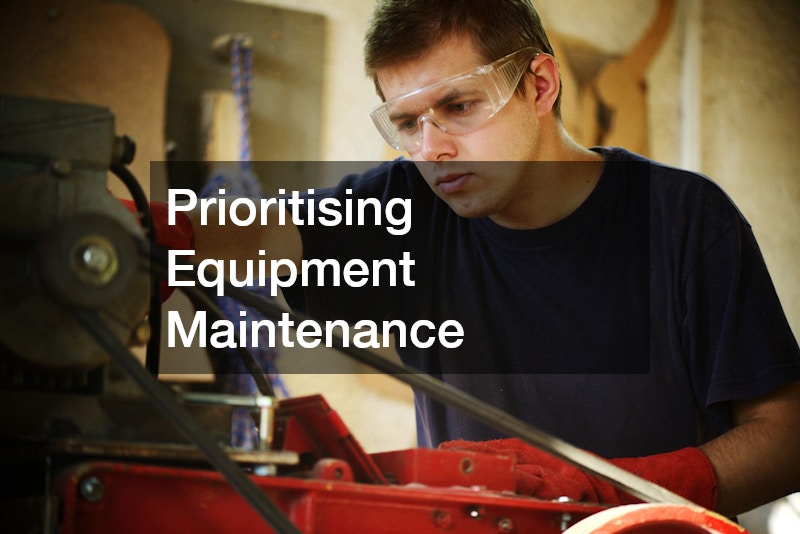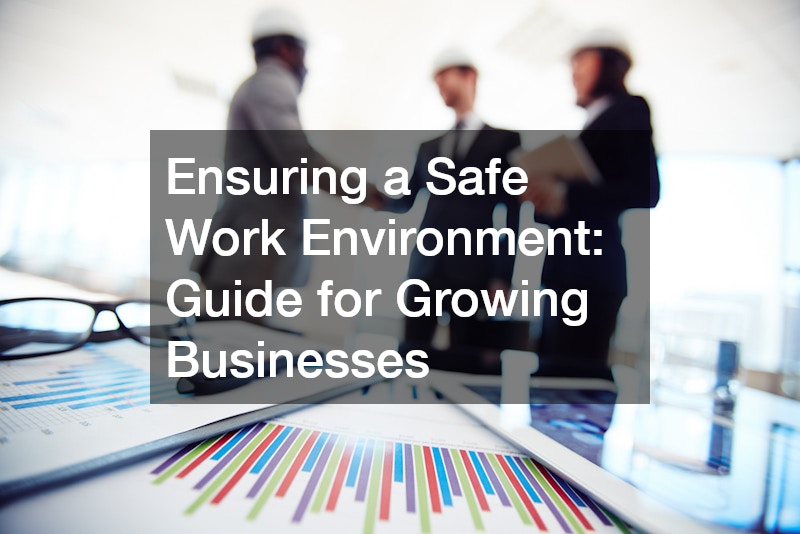In today’s dynamic and fast-paced business landscape, prioritising workplace safety is essential for ensuring the health and well-being of employees, as well as fostering long-term success. Safety measures form the backbone of any thriving organisation, helping to minimise risks, protect assets, and maintain operational efficiency.
This guide delves into key safety considerations for small and growing businesses, highlighting proactive measures, strategic planning, and the integration of Australian workplace standards.
Addressing Safety Challenges as Businesses Expand
As businesses grow and evolve, they face new and complex safety challenges. Implementing comprehensive safety strategies ensures that protocols keep pace with organisational changes. By proactively adapting safety measures, businesses can reduce downtime, prevent accidents, and maintain a healthy work environment.
Workplace safety extends beyond merely avoiding accidents; it plays a critical role in boosting productivity, employee morale, and organisational reputation. A robust safety culture attracts top talent and strengthens relationships with clients and partners, bolstering a company’s standing in the Australian marketplace.
Preventing Accidents Through Proactive Risk Management
Proactive risk management involves identifying hazards and addressing them before they lead to accidents. By embedding safety practices into daily operations and fostering vigilance among employees, businesses can focus on prevention rather than reaction.
Regular risk assessments are instrumental in uncovering hidden hazards. For example, identifying the need for roof repairs before severe weather can prevent costly disruptions. Engaging experienced professionals, such as fence contractors or specialists for equipment repairs, ensures that maintenance tasks meet strict safety standards.
Ongoing training for staff is equally critical. By conducting workshops and encouraging open dialogue about safety concerns, businesses can cultivate an environment where employees feel empowered to raise issues and contribute to safer practices.
Safety Planning for Expanding Operations

Growth presents unique safety challenges that require meticulous planning. Safety strategies should be integrated into every aspect of expansion, from the introduction of new equipment to structural changes. A thorough evaluation of existing safety measures helps identify areas for improvement, ensuring new processes align with the highest safety standards.
For instance, as site traffic increases, businesses may need to engage a tree service to enhance visibility and maintain clear routes. Regular equipment maintenance, such as hydraulic repairs or lift station servicing, is crucial to supporting expanded operations.
Collaboration with stakeholders, from management to contractors, is vital for creating a comprehensive safety plan. Engaging a rigging company to install equipment ensures setups meet stringent guidelines. Regular inspections by local authorities can provide additional reassurance, safeguarding both employees and assets during periods of growth.
The Importance of Routine Inspections
Regular workplace inspections form the foundation of effective safety management. By dedicating time and resources to inspections, businesses can identify potential hazards and address them promptly.
Routine checks should encompass everything from structural assessments, such as evaluating roof replacements, to examining equipment for necessary trailer repairs. These reviews help ensure compliance with safety protocols and foster continuous improvement.
Engaging external experts can provide an unbiased perspective. For example, a fence contractor can verify the integrity of perimeter defences, while septic maintenance services ensure hygienic conditions in high-use facilities. Additionally, regular office cleaning supports both safety and hygiene, contributing to a healthier workplace.
Developing Safety Protocols to Protect People and Property
Effective safety protocols safeguard employees and assets, creating an environment that prioritises well-being and minimises risks. These protocols should incorporate industry-specific standards and be regularly updated to reflect changes in operations or equipment.
For example, new installations that require hydraulic repairs or lift station upgrades must be integrated into updated safety guidelines. Collaborating with professionals for protocol development ensures comprehensive coverage and compliance with Australian standards.
Employee engagement is critical to the success of safety protocols. Training sessions should emphasise practical applications of safety principles, empowering employees to take an active role in upholding standards. Regular drills and feedback systems further reinforce a culture of vigilance and continuous improvement.
Fostering a Safety-Focused Workplace Culture
A safety-first culture is essential for the long-term success of any organisation. Embedding safety into the company’s ethos ensures that it influences decision-making at every level.
Leadership plays a key role in establishing this culture by modelling safety-conscious behaviours and promoting accountability. Transparent communication encourages employees to voice concerns and share ideas, fostering collaboration. For example, incorporating feedback into plans for roof replacement or septic maintenance can lead to more effective solutions.
Regular safety updates, such as newsletters or bulletins, help maintain awareness and highlight the organisation’s commitment to employee well-being.
Managing Safety During Facility Upgrades
Facility upgrades and renovations introduce unique safety challenges that require thorough planning. By integrating safety principles into every stage of the project, businesses can protect employees and minimise disruptions.
Collaborating with experienced contractors ensures high standards are upheld. For example, engaging a reputable roof replacement service guarantees safe and compliant improvements. Similarly, professional assistance for fence installations or tree removals enhances site safety.
Ongoing monitoring during renovations helps identify emerging risks, enabling timely adjustments to safety protocols. Temporary measures, such as restricted access or heightened awareness campaigns, can further reduce hazards.
Adapting Safety Practices for High-Traffic Areas
High-traffic workplaces present unique risks that require tailored safety measures. Proactively managing these environments involves clear traffic flow plans, designated loading zones, and visible signage.
Regular risk assessments can identify potential hazards, such as overcrowding or equipment malfunctions. Engaging professionals for trailer repairs ensures transport safety, preventing breakdowns and accidents.
Training staff to recognise and respond to risks is equally important. Ongoing education, supported by refreshers and feedback sessions, equips employees to handle dynamic work conditions safely.
Prioritising Equipment Maintenance

Proper maintenance of machinery and tools is a cornerstone of workplace safety. Regular servicing helps prevent mechanical failures, reducing the risk of accidents.
Collaborating with professional services, such as hydraulic repair specialists or lift station maintenance providers, ensures equipment operates safely and efficiently. Maintaining accurate records of servicing schedules supports proactive maintenance and resource allocation.
Streamlining Safety Protocols for Growth
As teams expand, simplifying safety protocols ensures accessibility and consistency across departments. Centralising safety guidelines in a digital repository allows for real-time updates and easy reference.
Cross-departmental collaboration strengthens safety efforts, enabling employees to share insights and develop cohesive solutions. Regular workshops and meetings foster a collective commitment to maintaining high safety standards.
Complying with Safety Regulations
Adhering to Australian safety regulations is vital for protecting employees and avoiding legal penalties. Conducting regular audits and inspections helps identify gaps in compliance and provides opportunities for improvement.
Detailed record-keeping supports transparency, offering evidence of safety measures and corrective actions. Educating employees about regulatory requirements reinforces a shared commitment to workplace safety.
Fire Safety and Emergency Preparedness
Fire safety and emergency planning are critical components of a comprehensive safety strategy. Regular drills and training equip employees with the skills to respond effectively to emergencies. Collaborating with local fire safety services ensures systems are functional and compliant with regulations.
Comprehensive emergency plans should address specific risks, outline roles and responsibilities, and include clear communication protocols.
Conclusion
Workplace safety is a dynamic process requiring ongoing attention, adaptation, and commitment. By embedding safety principles into every aspect of operations, businesses can create a secure and resilient environment. Proactive risk management, strategic planning, and regular evaluations ensure that safety remains a priority, protecting employees and assets alike.
As your organisation grows, embracing safety-first strategies will help navigate challenges and sustain long-term success. Whether managing routine inspections or planning for emergencies, prioritising safety is an investment in your business’s future.
